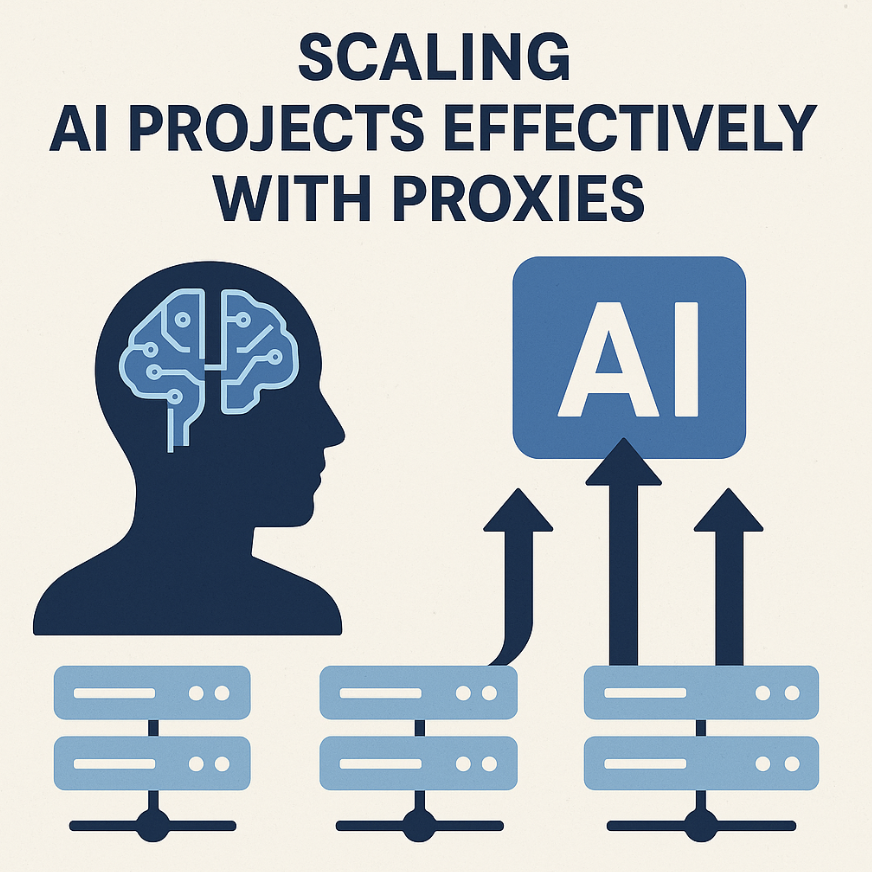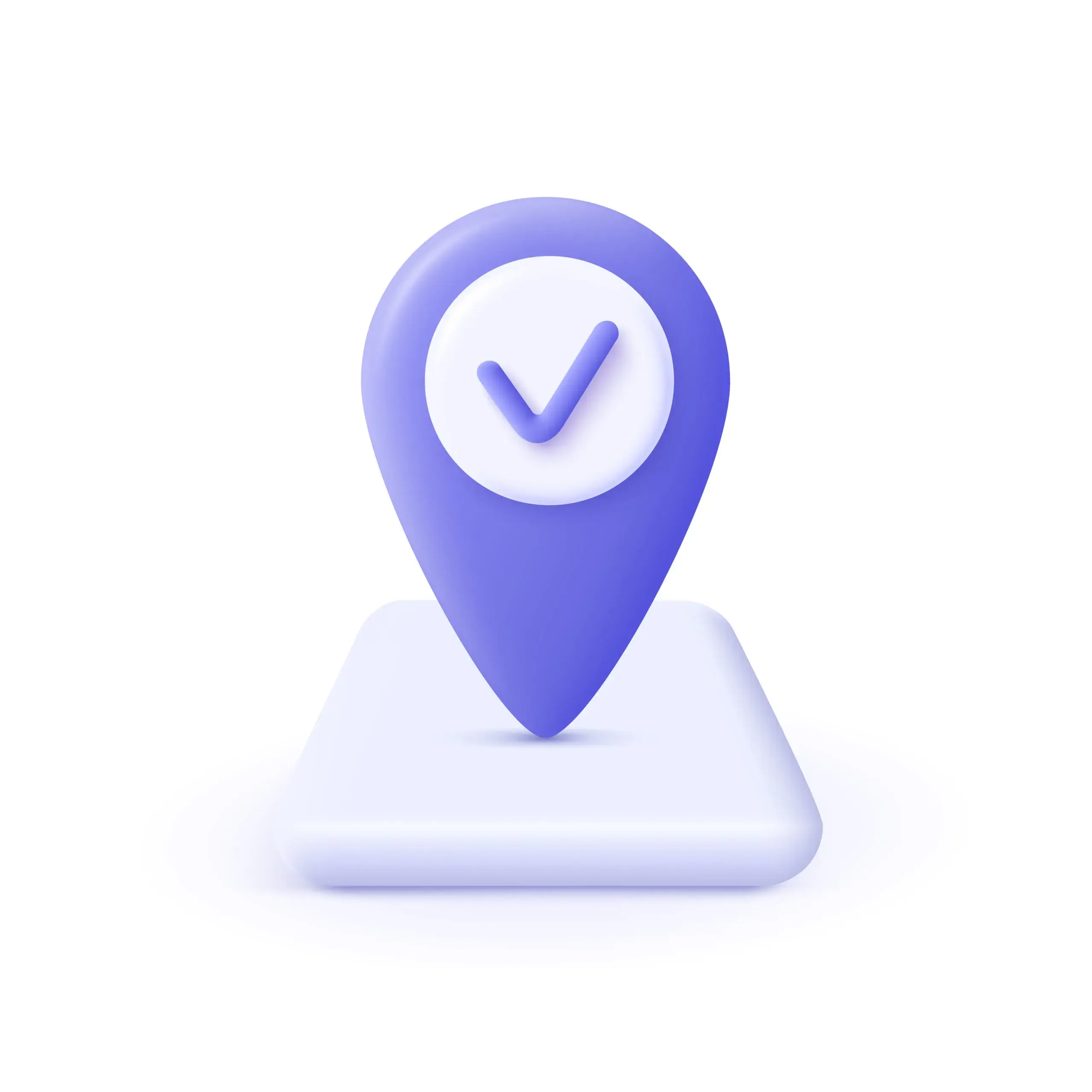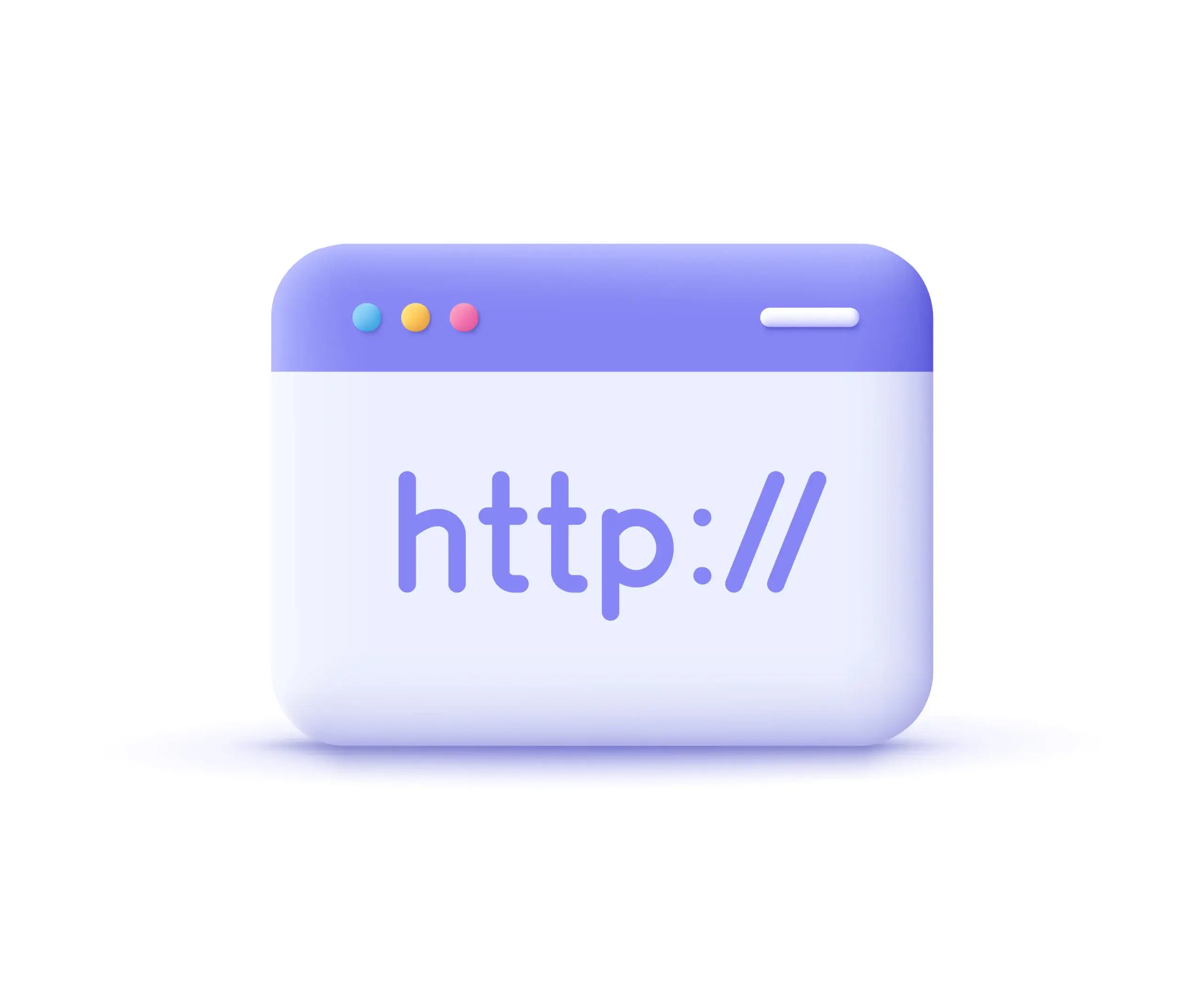Artificial intelligence is changing the way people work, analyze markets, and automate every task, but the real challenge starts when AI needs huge data, real-time agility, and resilient infrastructure. If your project is hitting limits or getting blocked, this blog will make the solution easy to understand and practical for any tech team or startup.
Proxy Types and Features:
🏘️ Rotating Residential Proxies
Why Scale AI Projects With Proxies?
Scaling AI demands further reach, more data streams, smarter automation, and robust privacy. Proxies act as the muscle behind these upgrades. They open doors to geo-locked information, help scrape data faster, and shield your bots from being blocked.
- AI needs endless fresh data: for machine learning, recommendation engines, price intelligence, or social listening, proxies create wide channels to collect what you need.
- Geo-restrictions vanish: need US or Japan data for your model? Residential proxies let you target exactly the location you want.
- Real-user IP rotation: scraping at scale, managing social accounts, or automating tasks, proxies make your system look organic.
How Proxies Solve Common AI Scaling Roadblocks
1. Blocks, CAPTCHA, and Rate Limiting:
AI on web scrapers faces strict blocks without flexible IP rotation. Residential proxies, especially those with large pools and seamless rotation (like ProxyEmpire, with 9.5M+ IPs across 170 countries), keep requests moving and unblock any bottlenecks.
2. Data Diversity and Fairness:
Large proxy pools ensure that you gather unbiased, rich datasets across regions, languages, and marketing platforms.
3. Security and Privacy:
AI projects can be vulnerable to cyber threats or privacy concerns. With proxy masking, using home or mobile IPs, your infrastructure remains hidden and protected.
Practical Benefits Proxies Bring to AI Projects
Model Training and Real-Time Data
AI needs real-world data, on products, prices, sentiment, and news, day and night. Residential proxies show up as true users, letting AI agents scrape and analyze without getting flagged.
- Train with unrestricted regional datasets
- Build global intelligence tools (finance, SEO, fraud detection)
- Adapt models with fresh market signals
Automation and Decision-Making
From chatbots to trading bots, proxies allow for reliable multi-account automation without bans. The system never looks like a bot, always finds the best deals, and keeps automating tasks without breaks.
Security and Compliance
Modern AI regulations (GDPR, HIPAA) require systems to protect user identities and data sources. Proxies mask and randomize outbound IPs, so both compliance and privacy are easier to achieve.
Use Cases: Proxies Powering AI at Scale
E-commerce and Market Intelligence
- Gather competitor prices, monitor inventory, and analyze reviews using proxy-powered automation.
- Global proxies help brands react fast to real-time changes, keeping data pipelines uninterrupted.
Social Media Analytics
- Scrape social networks for audience insights, engagement, and brand tracking, proxies evade social platform blocks so you get the full picture.
SEO and SERP Tracking
- With the SERP Scraping API, check rankings and search features across regions. Every search engine result, no CAPTCHA, no limits (see our SERP Scraping API).
Use case:
Best Practices for Scaling AI With Proxies
- Rotate proxies often: mimic real traffic for best results, especially in high-volume scraping projects.
- Monitor speeds and success: ProxyEmpire tools give detailed stats and real-time monitoring so your pipeline never fails.
- Integrate with automation tools: APIs and public endpoints let you scale bots and data scrapers quickly.
- Stay ethical: Always respect Terms of Service and privacy requirements.
Real Data Behind Proxy-Driven AI Growth
Check out recent statistics:
- Residential proxies now account for the majority of proxy market growth, with some providers seeing up to 400% year-over-year revenue increases in usage and adoption in 2025.
- 25% of website traffic is bot-driven.
- Geo-restricted content makes up approximately 60% of inaccessible web data for AI teams.
- The highest-performing residential proxies reach up to 99.94% success rates and sub-second response times (0.57s average in Europe, 1.8s globally).
How ProxyEmpire Stands Out
ProxyEmpire is a premium proxy service provider designed to empower web scraping, data collection, and unrestricted internet access through a vast network of ethically sourced residential, mobile, and datacenter proxies. Below is a detailed description based on the provided information:
Overview of ProxyEmpire
ProxyEmpire offers a comprehensive suite of proxy solutions tailored for individuals, businesses, and developers seeking reliable, high-performance tools for data gathering, privacy protection, and bypassing geo-restrictions. With over 9.5 million clean IP addresses spanning 170+ countries, ProxyEmpire provides unparalleled global coverage, ensuring users can access content at scale with a 99.9% uptime and lightning-fast response times (as low as 0.6 seconds).
Proxy Types and Features:
🏘️ Rotating Residential Proxies
Key Benefits
- Global Reach: Access to over 9.5 million IPs worldwide, covering every major region, with precise targeting options (country, city, state, ASN/ISP).
- High Reliability: A 99.86% uptime ensures uninterrupted service, supported by patented technology for enhanced speed and security.
- Ethical Sourcing: Proxies are responsibly harvested, ensuring quality and compliance.
- Versatile Use Cases: Supports web scraping, price monitoring, sneaker copping, SEO tracking, ad verification, and more.
- Integration-Friendly: Compatible with standard proxy protocols (HTTP, SOCKS5) and third-party tools like Multilogin, Dolphin Anty, Kameleo, Octobrowser, and Gologin.
- No Hidden Fees: Transparent pricing with all features included, starting at a $1.97 trial.
Use case:
Why Choose ProxyEmpire?
- Massive Proxy Pool: Over 9.5 million IPs, outpacing competitors with broader coverage and quality.
- Superior Performance: High success rates (up to 99.95% for scraping) and industry-leading speeds.
- User-Friendly: Intuitive dashboard, developer-friendly documentation, and 24/7 support with dedicated account managers for corporate clients.
- Cost-Effective: Flexible pricing with no limits on concurrent sessions and a rollover data feature unique to ProxyEmpire.
Quick Tips for Scaling AI
- Use residential proxies for sensitive, region-specific scraping needs.
- Prefer rotating pools for high-frequency, diverse scrapes.
- Set reasonable scraping rates to keep datasets clean and organic.
FAQ:
1. What are proxies in the context of scaling AI projects?
Proxies are intermediary servers that route internet requests between your AI system and target websites, masking your original IP address. In AI projects, they are essential for large-scale data collection, enabling access to diverse web data without detection or blocks, which is crucial for training models like LLMs. They help scale by distributing requests, bypassing restrictions, and ensuring anonymity.
2. Why use proxies when scaling AI projects?
Proxies allow AI teams to gather massive datasets efficiently by avoiding IP bans, geo-restrictions, and rate limits that hinder unproxied scraping. This enables scaling from small prototypes to enterprise-level training, improving data diversity and model accuracy while reducing downtime. Without them, projects often face data scarcity or legal issues.
3. How do proxies differ from VPNs in AI scaling?
Proxies focus on routing specific requests (e.g., HTTP/HTTPS) for targeted data scraping, offering finer control like IP rotation. VPNs encrypt entire connections but are slower and less scalable for high-volume AI tasks. Proxies are preferred for efficiency in data pipelines.
4. What role do proxies play in AI data pipelines?
Proxies integrate into data pipelines to fetch real-time or historical web data, feeding it into ETL processes for AI training. They ensure continuous flow by rotating IPs and mimicking human behavior, scaling pipelines to handle terabytes of data without interruptions.
5. What are the main types of proxies used in AI projects?
Common types include residential (real home IPs for stealth), datacenter (fast server-based for volume), mobile (device IPs for app data), and ISP (hybrid for balance). Each suits different scaling needs, like residential for evasion and datacenter for speed.
6. When should I use residential proxies for AI scaling?
Use residential proxies when scraping sensitive sites that detect bots easily, as they appear as genuine user traffic. They’re ideal for global data diversity in scaling LLMs, reducing ban risks by up to 50% in large projects.
7. What advantages do datacenter proxies offer for AI?
Datacenter proxies provide high speed and low cost, making them suitable for bulk data extraction in scalable AI training. They’re effective for non-sensitive sources but may require rotation to avoid flags.
8. How do mobile proxies help in scaling mobile-focused AI projects?
Mobile proxies use 3G/4G/5G IPs, perfect for collecting app analytics or ad data. They scale by offering high anonymity through natural IP changes, supporting AI models for mobile user behavior prediction.
9. What are ISP proxies and their role in AI?
ISP proxies combine residential authenticity with datacenter speed, hosted on real ISP servers. They’re great for enterprise AI scaling, like e-commerce monitoring, balancing performance and undetectability.
10. What are rotating proxies and why are they essential for scaling?
Rotating proxies automatically switch IPs per request or session, preventing detection during massive scraping. They’re key for scaling AI data collection, maintaining 99% uptime in high-concurrency environments.
11. How do proxies help overcome data barriers in AI training?
Proxies unlock diverse sources, bypass restrictions, scale collection instantly, and ensure privacy. They prevent blocks and enable global access, leading to consistent, high-quality datasets for better AI performance.
12. What challenges arise when scaling AI without proxies?
Without proxies, teams face IP bans, geo-blocks, rate limits, and incomplete datasets, stalling training and reducing model accuracy. Scaling becomes inefficient, with up to 70% request failures in unproxied setups.
13. How do proxies improve data quality in scaled AI projects?
By accessing varied global sources and avoiding biases from limited data, proxies ensure comprehensive datasets. They maintain consistency through reliable collection, enhancing AI model generalization.
14. Can proxies reduce costs in scaling AI projects?
Yes, by optimizing data collection efficiency, proxies cut downtime and retry costs. Managed services can reduce IP ban-related expenses by 30%, allowing scalable training on budget.
15. What security benefits do proxies provide in AI scaling?
Proxies mask IPs to protect against retaliation or tracking, encrypt connections, and comply with privacy laws. They prevent data leaks in large-scale scraping operations.
16. How to choose a proxy provider for scaling AI?
Look for large IP pools, high uptime (99%+), global coverage, and AI-specific features like auto-rotation.
17. What are best practices for proxy rotation in AI?
Rotate IPs frequently, mimic human request patterns (e.g., random delays), and monitor success rates. Use AI-driven management to optimize rotations, boosting efficiency by 35%.
18. How to integrate proxies into AI workflows?
Incorporate proxies via libraries like Python’s requests with proxy support, or tools like Scrapy. For scaling, use proxy pools in distributed systems like Kubernetes for parallel scraping.
19. How to ensure ethical data collection with proxies?
Respect website terms, avoid PII scraping, comply with GDPR/CCPA, and use opt-in sources. Ethical proxies from residential networks prevent abuse and promote fair AI development.
20. What monitoring is needed for proxies in scaled AI?
Track response times, ban rates, and throughput using tools like Datadog. Optimize for cost by monitoring usage, ensuring proxies don’t bottleneck large-scale training.
21. How to handle geo-restrictions with proxies in AI?
Select proxies with location targeting to route through specific countries, accessing restricted data for diverse training sets. This scales global AI applications effectively.
22. How do proxies aid in training Large Language Models (LLMs)?
Proxies enable massive, diverse data scraping for LLMs, bypassing limits for nuanced training. They support high-speed, distributed requests, improving model context and accuracy.
23. What are common mistakes when using proxies in AI scaling?
Over-relying on free proxies (high ban risk), ignoring rotation, or neglecting compliance. Poor integration can lead to inefficiencies; always test at scale first.
24. How do free vs. paid proxies compare for AI projects?
Free proxies are unreliable, slow, and prone to bans, unsuitable for scaling. Paid ones offer reliability, speed, and support, essential for enterprise AI with high data demands.
25. What future trends in proxies for AI scaling?
AI-managed proxies for auto-optimization, integration with edge computing for faster scaling, and emphasis on sustainable, ethical networks. Expect more mobile/5G proxies for real-time AI.
26. How to scale proxy usage for real-time AI applications?
Use high-concurrency proxies with load balancing, integrating into streaming pipelines. Monitor latency to ensure sub-second responses for apps like recommendation systems.
27. What legal considerations apply to proxies in AI?
Ensure compliance with data laws, avoid scraping protected content, and use proxies ethically. Violations can lead to lawsuits; consult legal experts for international projects.
28. Can proxies be used for AI beyond data collection?
Yes, for load balancing API calls in deployed AI, or anonymizing inference requests. In scaling, they optimize traffic in production environments.
29. How do proxies impact AI project timelines?
By enabling faster data access, proxies slash collection time by 50%, accelerating training cycles and allowing quicker iterations in scaled projects.




















